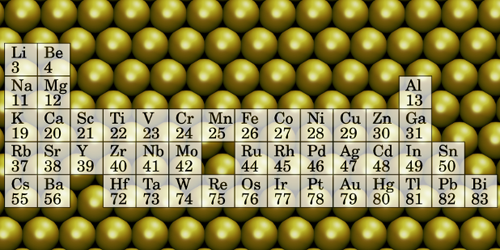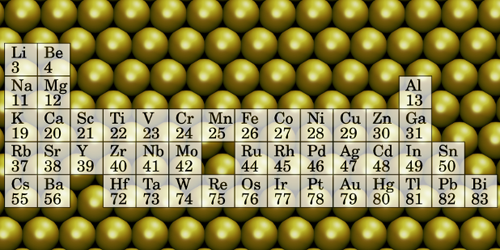An Atlas for 2D Metals
Since the isolation of graphene in 2004, researchers have investigated hundreds of two-dimensional (2D) materials, which are one or a few atomic layers thick and can feature exceptional strength or electron mobility. The structures and properties of these materials are determined by their chemical bonds, which are usually covalent, as in graphene. But 2D materials with metallic bonding have recently shown promise for catalysis and gas sensing applications. Now two theorists have performed a systematic study of 2D materials that could be formed from many metallic elements. They then compiled an “atlas” that could guide researchers trying to synthesize these materials.
While only a few elemental 2D metals have previously been investigated, both experimentally and theoretically, Janne Nevalaita and Pekka Koskinen of the University of Jyväskylä in Finland carried out a density-functional study of 2D materials that could be formed from 45 metallic elements, ranging from lithium to bismuth. For each one, they calculated key properties related to structure and mechanical strength: average bond lengths, cohesive energy (a measure of how strongly the lattice of atoms is bound together), and bulk modulus (a measure of compressibility). The calculations suggest that the properties of a 2D material are “inherited” from those of the 3D version of the same metal and can thus be calculated from the 3D-metal’s properties through linear extrapolation. For each 2D metal, the duo analyzed three possible crystal lattice configurations—hexagonal, square, and honeycomb—pinpointing those most likely to lead to strong and stable sheets that are not prone to warping.
This research was published in Physical Review B.
–Matteo Rini
Matteo Rini is the Deputy Editor of Physics.





